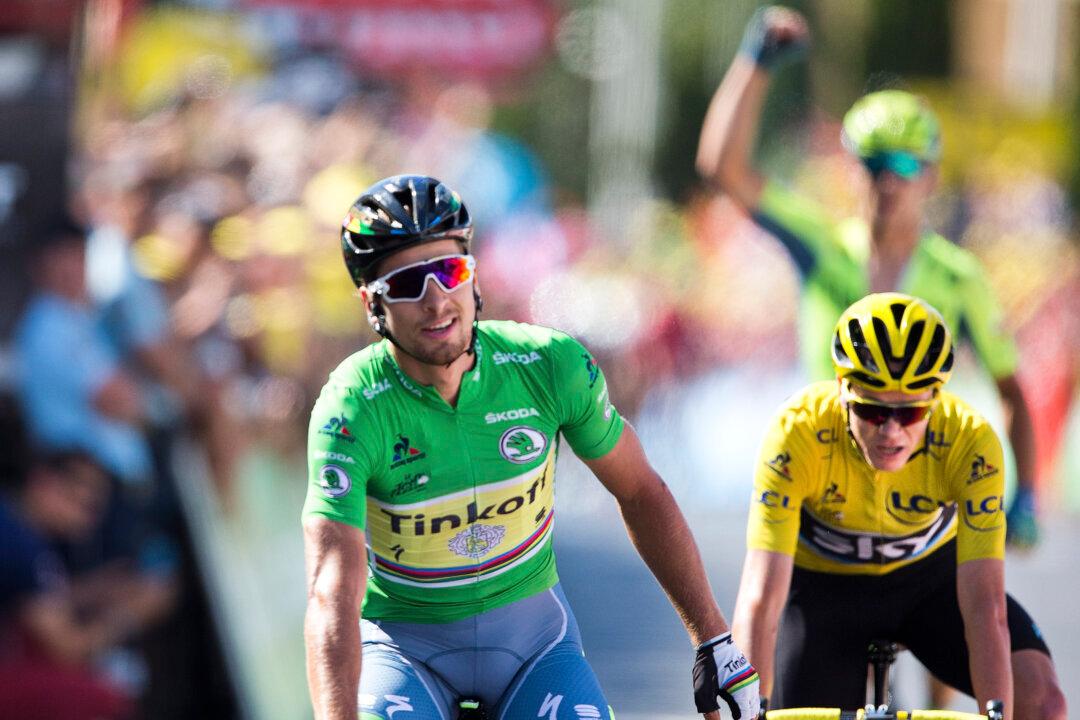Master cyclists Peter Sagan and Chris Froome used tactics and experience to turn a mundane sprint stage into a thrilling breakaway win for the World Champion and an twelve-second time gain for the race leader.
Sagan, in the Sprinters’ green jersey, and Tinkoff team mate Maciej Bodnar attacked an already shaken peloton with twelve km left in the 162.5 km stage, using stiff winds and turns in the road to gain a slight edge. Sky’s Chris Froome, in the race leader’s yellow jersey, saw what was happening and immediately latched onto the charging Tinkoff pair, followed in a few seconds by team mate Geraint Thomas.
This quartet opened a gap of 20 seconds which shrank to six seconds by the finish line. No one could match Sagan’s speed or power in a sprint, but Froome made the effort and earned second place and a six-second time bonus.
The win was Sagan’s second of the 2016 Tour, and gave him a huge lead in the green jersey points. Froome’s time gain was tiny in terms of seconds but huge in psychological impact: this marks the second stage where the 2013 and 2105 Tour winner has attacked in unorthodox fashion and gained time on his rivals.
The other General Classification contenders now know that they must be vigilant at every turn. Sprint stages, downhills, any time on any terrain, the race is on.
Stage 11 should have been a relaxing stage for the GC rivals as the sprinters’ teams contested the finish. Instead Froome proved that the old norms have no meaning—the race is on and never off. Riders beware!






